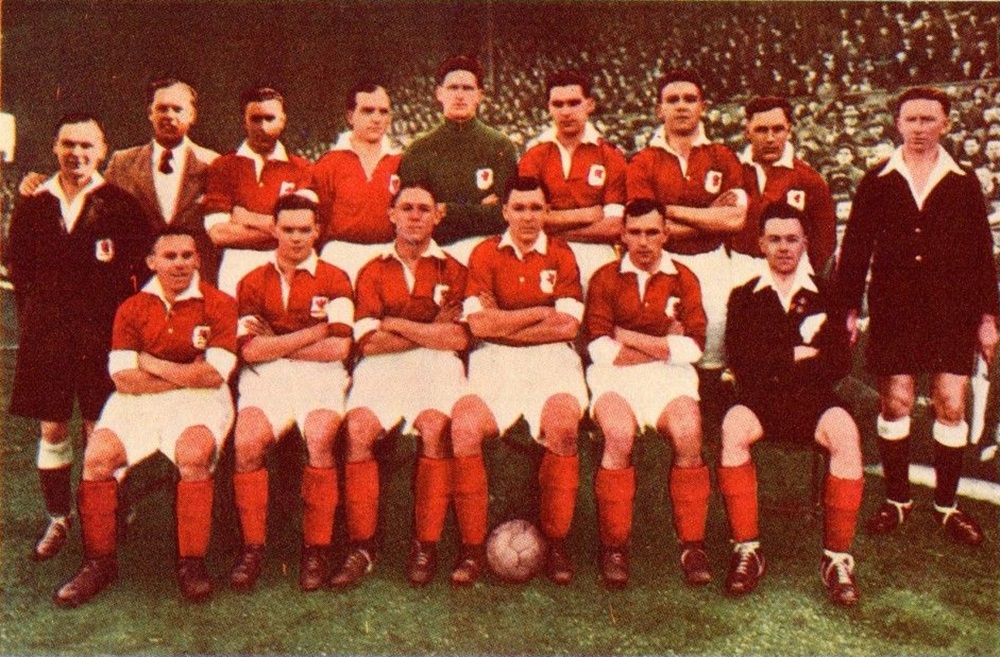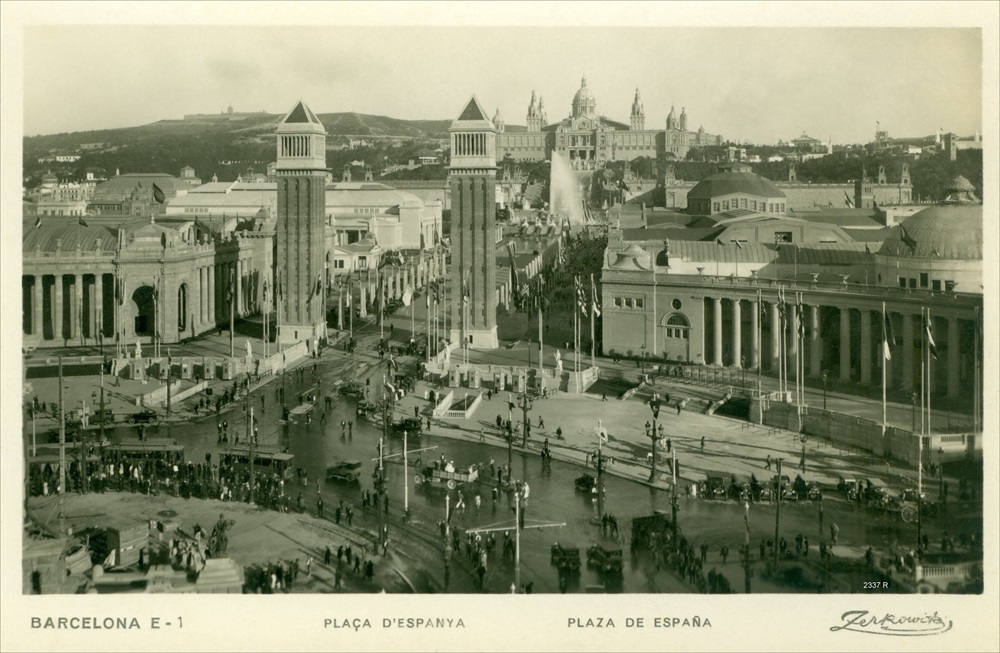Before Bale: The Barry boy in Barcelona

Iwan Williams
George Green was born in Barry Docks on 12th November 1912. His journey as a footballer was unconventional and as the first Welsh player to play abroad, he paved the way for others.
The twelfth of thirteen children, Green left school behind to go to sea. A mess room boy, he spent his fifteenth birthday in Saigon.
Returning home, Green played for Barry Schools, Mount Stuart Dry Docks FC and eventually Barry Reserves before signing for Charlton Athletic as a centre forward in March 1934. Despite a promising start he failed to make any first team appearances and broke his ribs twice.
But his life and playing career would soon take an unexpected turn in 1935. According to ‘Sons of Cambria’ (Garland/Davies, 2021), “a pal of Jimmy Seed, the Charlton manager, persuaded Green to try Spanish football and he headed for Barcelona”.
RCD Espanyol
And so Green landed in Barcelona on 29th August 1935 as a RCD Espanyol player. And what a time to be in Barcelona. A bustling city of 1.1 million people, Barcelona attracted tourists and relied on its importance as a strategic place for maritime trading then as it does now.
It was the year that Lorca described Las Ramblas as “the happiest street in the world, the street where the four seasons of the year live together, the only street of the land that I wish would never end”.

Under the governance of the Generalitat, the semi-autonomous Catalonian government, the Macià plan of 1932-35 was implemented, described by ‘20th century architecture’ as a “massive and radical project for reorganizing this working class city into a communal utopia of high-density courtyard housing”. In keeping with its long and tumultuous history, work on the Nativity façade of Gaudí’s Sagrada Família was interrupted in 1935.
Green would also have witnessed the Spanish general election of 16th February and 4th March 1936. The election was won by the Popular Front, a left-wing coalition who performed strongly in Catalunya. The election resulted in left-wing revolutionary protests and violence, the deaths of sixteen people and freeing prisoners. It was an indication of what was to come and engulf Spain in July.
Debut
Green’s La Liga debut for Espanyol was a 1-0 win over fierce rivals Barcelona on 10th November 1935. Whilst his teammates were Catalan/Spanish, Green could at least converse in English with his manager, Harry Lowe from Northwich. Lowe still holds the record for the oldest player to play in La Liga, turning out for Real Sociedad at the age of 48.
The As article on Green (2017)mentions positive praise “At the first touches of the ball, we saw that Green is a true artist, and not precisely in juggling but in practical and effective play”. He scored his first and only goal against Osasuna on 24th November, a 3-0 win in the now demolished SarriàStadium. In total he played 15 games for Espanyol, with his final game a Copa Del Rey tie against Barcelona on 31st May 1936, a 3-0 defeat. Espanyol finished the twelve team La Liga in 9thplace.
Green returned to London on 6th June to marry his fiancée, and expected to resume his career with Espanyol. However, on 17th July 1936, less than two months after his final game with Espanyol, the Spanish Civil War started.
On 19th July, the military uprising in Barcelona took place. Part of the Spanish Army rebelled against the Republican government. Over the course of the violent day, the rebel troops were defeated, resulting in 500 deaths and 3000 wounded. Damìa Cañellas, Technical Secretary of Espanyol and instrumental in bringing Green to the club, was murdered by anarchists on 25th July.
Green never returned to the city as a player, and continued his career with Charlton, playing 59 games until 1939.
Northern Ireland
Despite the unique and rich experience of playing abroad in La Liga, Green’s Cymru career didn’t start until 1938. His debut was against Northern Ireland on 16 March 1938, a 1-0 defeat in Belfast. His fourth and final cap was against France on 20th May 1939, a 2-1 defeat in Paris.
Given his international club career, it was fitting that Green was present for Cymru’s first game outside Britain and Ireland.
Like so many of his generation, the outbreak of the Second World War robbed Green of his best years as a young man and his peak as a footballer. He spent the war years supervising the physical fitness of Canadian troops at Godalming. His final game in professional football was against Arsenal on 27th October 1945, when he scored a hattrick at The Valley in a 6-2 win.
Green died in Bromley on 1st May 1994 at the age of 81. Like many of his generation, he was a modest, hardworking man. As Garland and Davies (2021) mention, he worked a number of roles after his playing days, including manager of Dartford FC, chief scout at Portsmouth, a partner in a metalwork business, and a clerk for Express Dairies.
He lived in Eltham during his latter years, and if online Addicks forums are to be believed, Green ‘swore like a trooper’!
51 years before Mark Hughes arrived at the Nou Camp and 78 years before Gareth Bale joined Real Madrid for a world record fee (not forgetting David Vaughan’s time with Real Sociedad in 2007/08!), Green arrived in Barcelona in very different circumstances.
Not much is known about his brief adventures in 1930s Barcelona, but he was a pioneer and a trailblazer for other Welsh players to ply their trade abroad. The Barry boy went far, and did well.
Support our Nation today
For the price of a cup of coffee a month you can help us create an independent, not-for-profit, national news service for the people of Wales, by the people of Wales.






